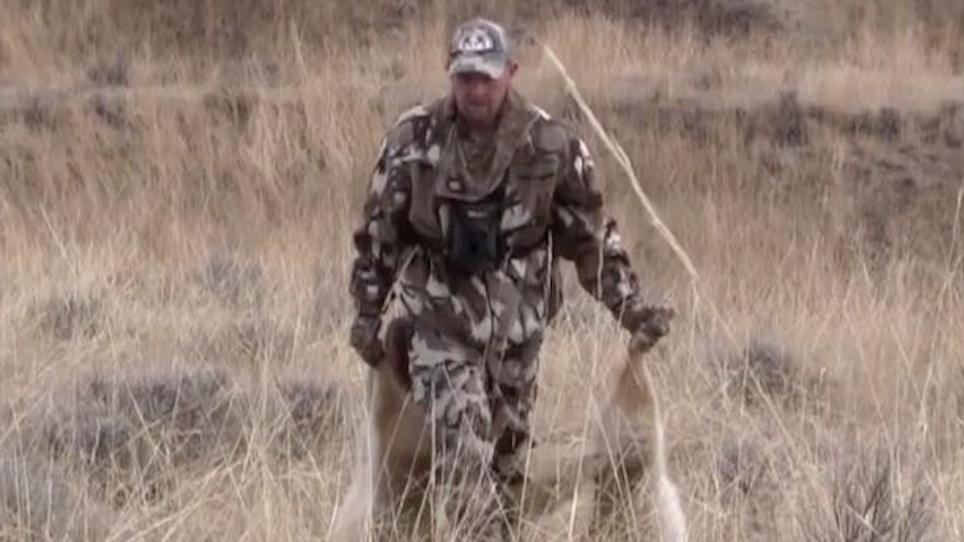The reaction of the medium-sized Alaska black bear a half mile down the beach was instantaneous when the piercing, raspy, squalls from my Burnham Bros. Black Magic mouth call reached his ears.
He whirled and started ambling my way at a steady pace. As had been my custom over the past few years, as a relative new comer to predator calling, I immediately quit calling as I figured the curious bruin had my location pinpointed and would continue coming. That and the fact I couldn’t shoot him anyway, since I had taken a huge Alaskan black bear two weeks earlier and filled my license.
Surprisingly, after I quit calling, the bear stopped and resumed feeding along the beach. When I started calling again at much lower volume, he resumed coming my way, but would stop and seemingly lose interest when I quit calling. This continued until he was 50 yards out and I ceased calling altogether to see what he would do. Besides, I really didn’t want him much closer!
He scrounged around on the beach for another few minutes, and then ambled off into the dense coastal rain forest without so much as a look in my direction.
I have since learned from experience that most bears have a short attention span and a lot less innate curiosity than other predators. Since that time I have called in numerous bears and whether I’m using a mouth blown call or electronic — where legal for hunting and photography — caller my best results have been with continuous calling and staying on stand for much longer periods, at least an hour or more, than for predator calling, in general.
This early calling experience made me question whether continuous calling might be more productive, for general predator calling, than intermittent calling as advocated by most call manufacturers and knowledgeable predator callers of the time. I am sure, the fact, the only predator calls available then, were mouth blown calls played a big part in the popularity of intermittent calling over continuous calling. It takes a whole lot more wind to keep the intensity and volume going for long periods with a mouth call.
Over the years I’ve vacillated between the two methods and would have to say that when I am using a mouth blown call for predators other than bears, I will call intermittently because I can better control my volume, intensity and sound variation more effectively and with less effort. I usually start out at very low volume and intensity and work up in both volume and intensity in two to three minute increments, until I have a predator in sight. At that point, I will vary my calling procedures depending on the predator’s actions and reactions. There have been times when enthusiastic calling works best and other times when reticence seems to be the key to conning a critter within range.
I’ve been successful using both techniques with an electronic call but must admit that old and successful tactics die hard. I still use an electronic caller intermittently more than continuously when predator calling but follow the same calling scenario as with a mouth call. Have tried to keep records of success for both methods but there are so many variables that all this information tells me is that the critters survive a disproportionate amount of attempts.
Get a group of ardent predator callers together today, and I can guarantee the conversation will eventually turn to which is best for predator calling, continuous calling or intermittent calling.
Byron South, who is without doubt one of the most accomplished and ardent predator hunters I know, makes a good portion of his living as an animal damage control specialist and has hosted several TV programs and worked as a consultant for several major call manufacturers. Consequently, he spends a lot of time trying to eliminate predators that have been pressured and educated by less accomplished landowner, hunters and trappers, before he is contacted to remedy the problem. South is a strong advocate of continuous calling. He wants his quarry to be constantly hearing, concentrating, and reacting to the sounds emanating from his call, either mouth blown or from his own recently designed and manufactured Bullet HP digital, Bluetooth, electronic caller (www.convergenthunting.com), rather than stopping, thinking and becoming more wary each time the alluring call sounds cease. Makes sense to me and I definitely cannot argue with success.
It’s interesting to note that when South runs into an extremely educated and wary critter he often will call continuously for an hour or longer. Then he will remain patiently and silently in position for another hour or two. He has been extremely successful in killing some super canny, call shy, albeit curious, critters with this tactic.
When I asked, Al Morris — well known, lifelong predator caller, four-time winner of the world championship predator calling competition and present host of Foxpro’s Furtakers TV show — as to whether he preferred intermittent calling or continuous calling for his predator hunting and filming endeavors, his answer sums up the most common sense consensus answer to this question. To quote Big Al: “Intermittent…unless continuous is the key!







